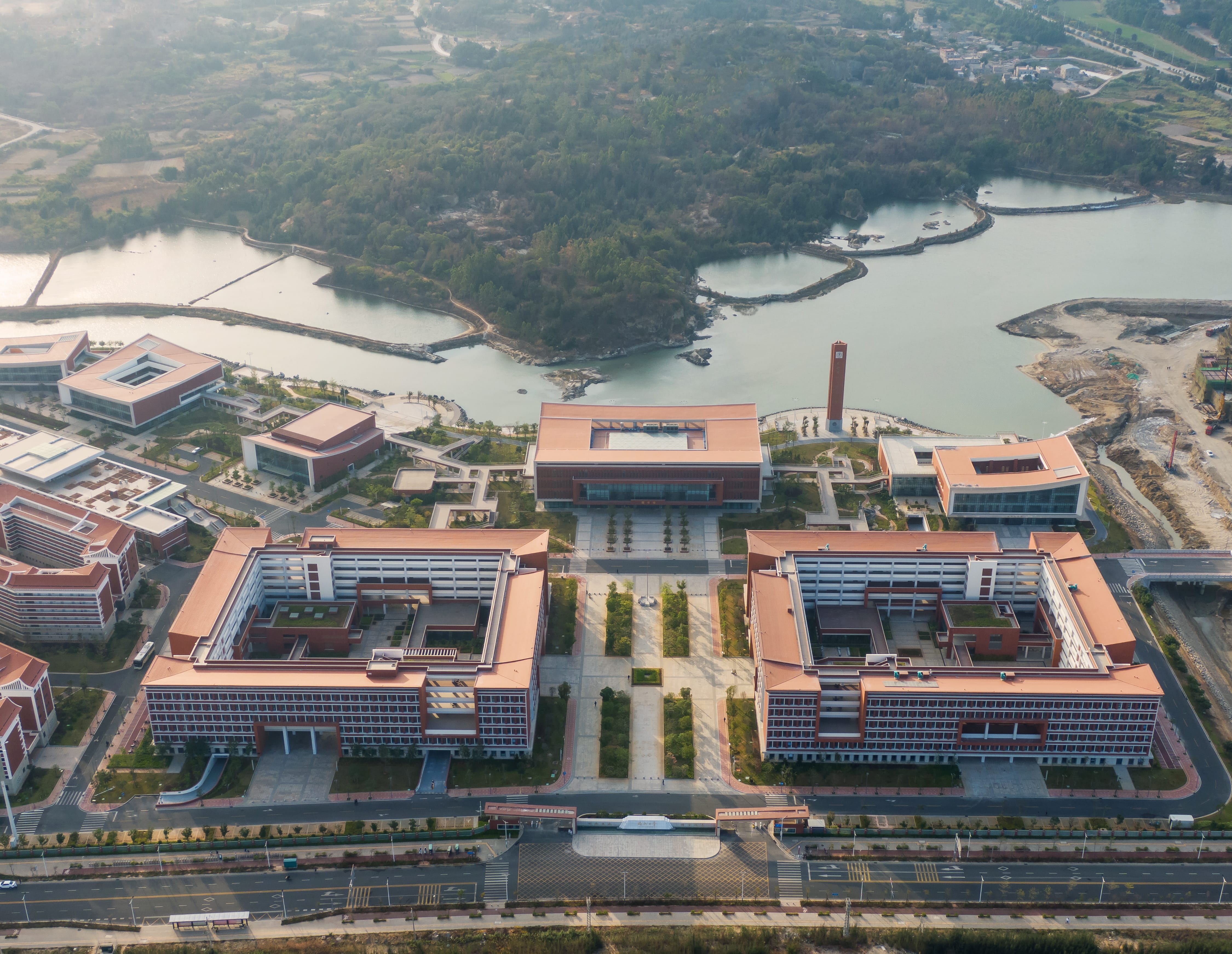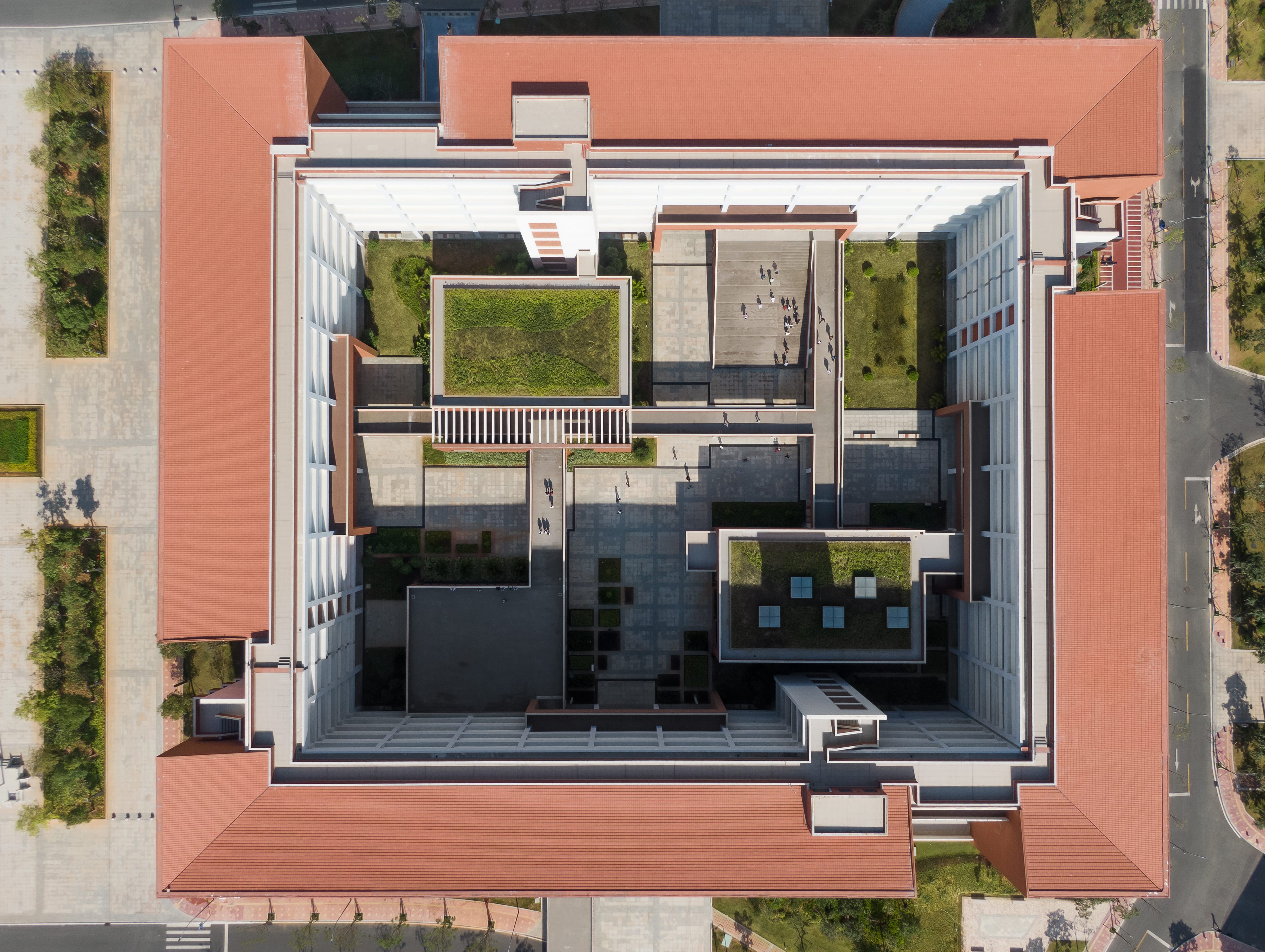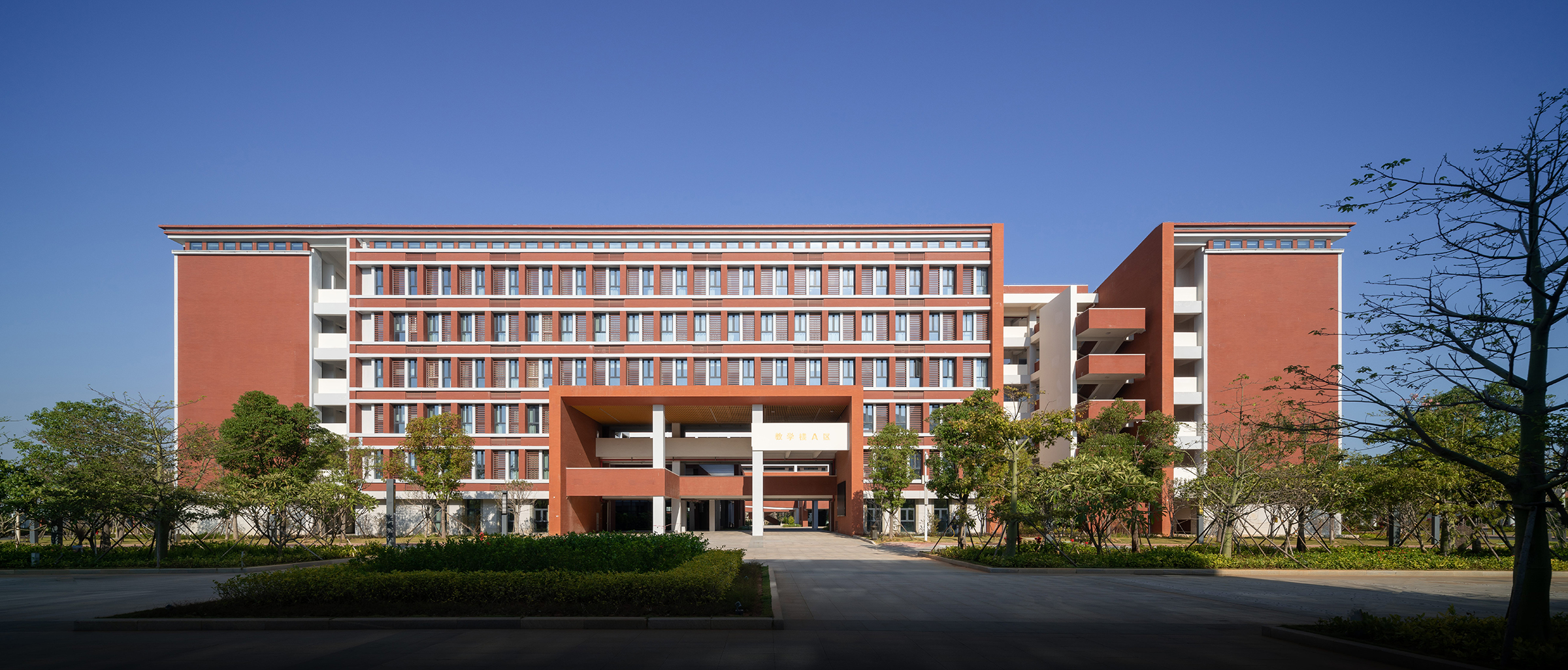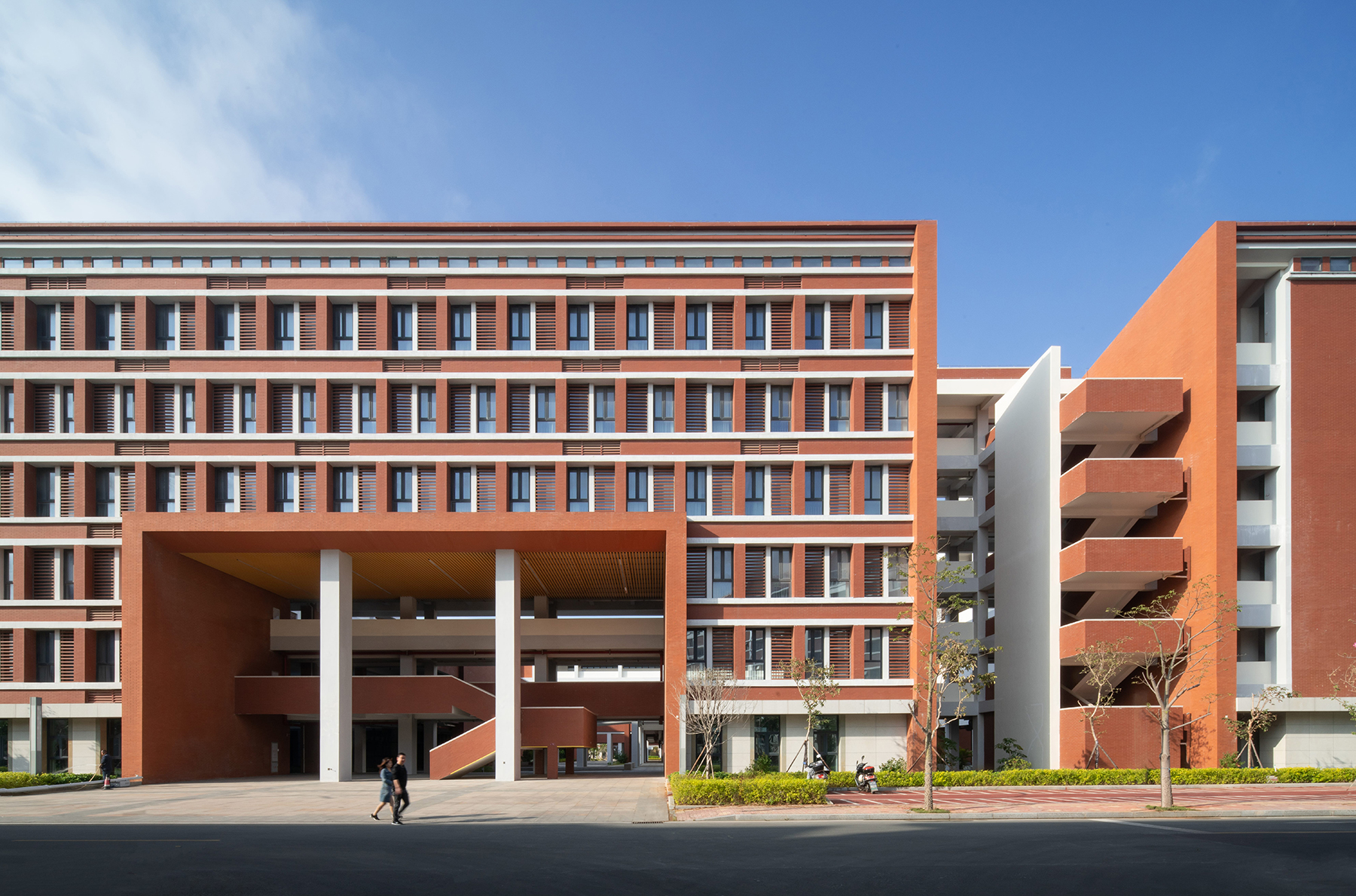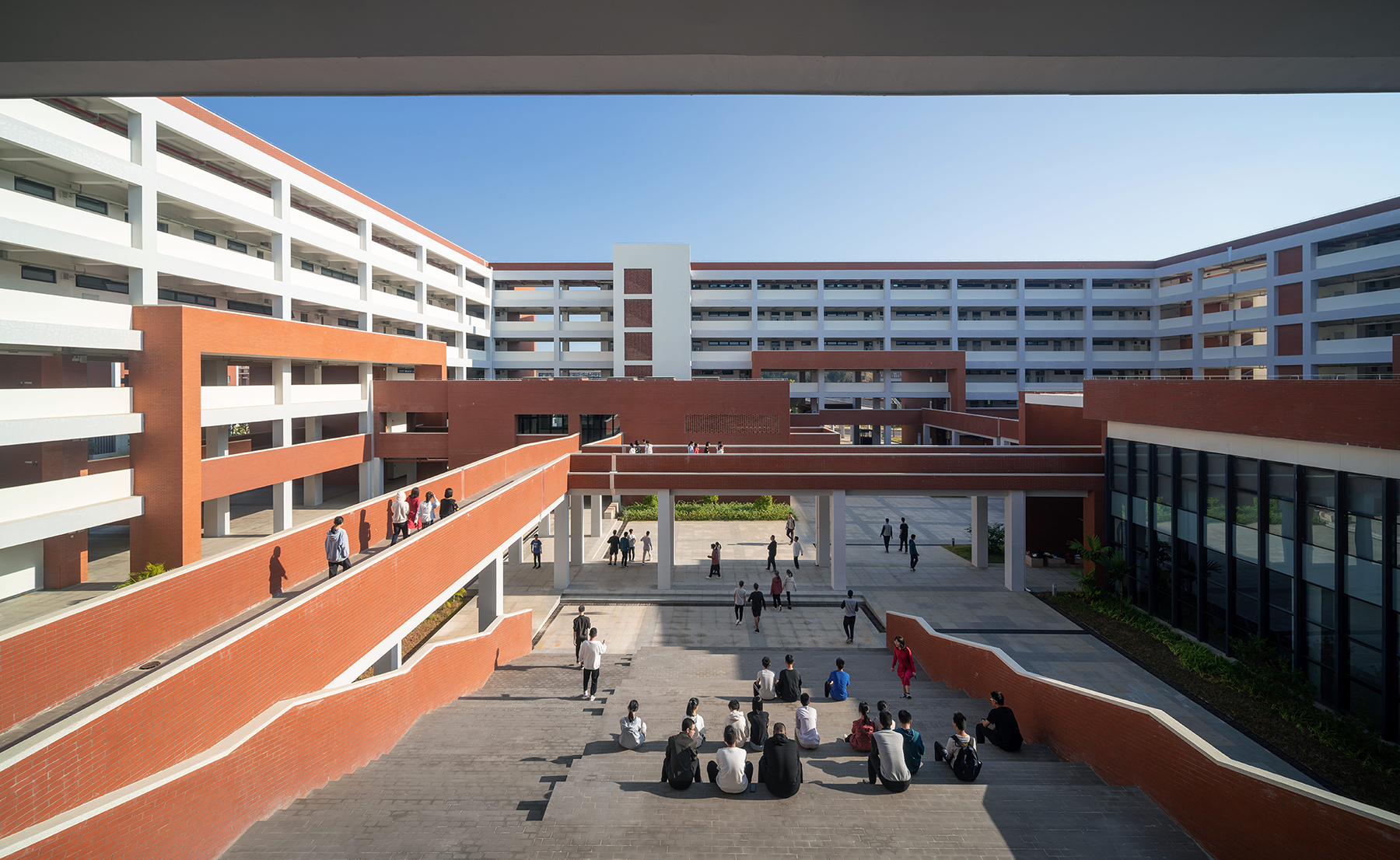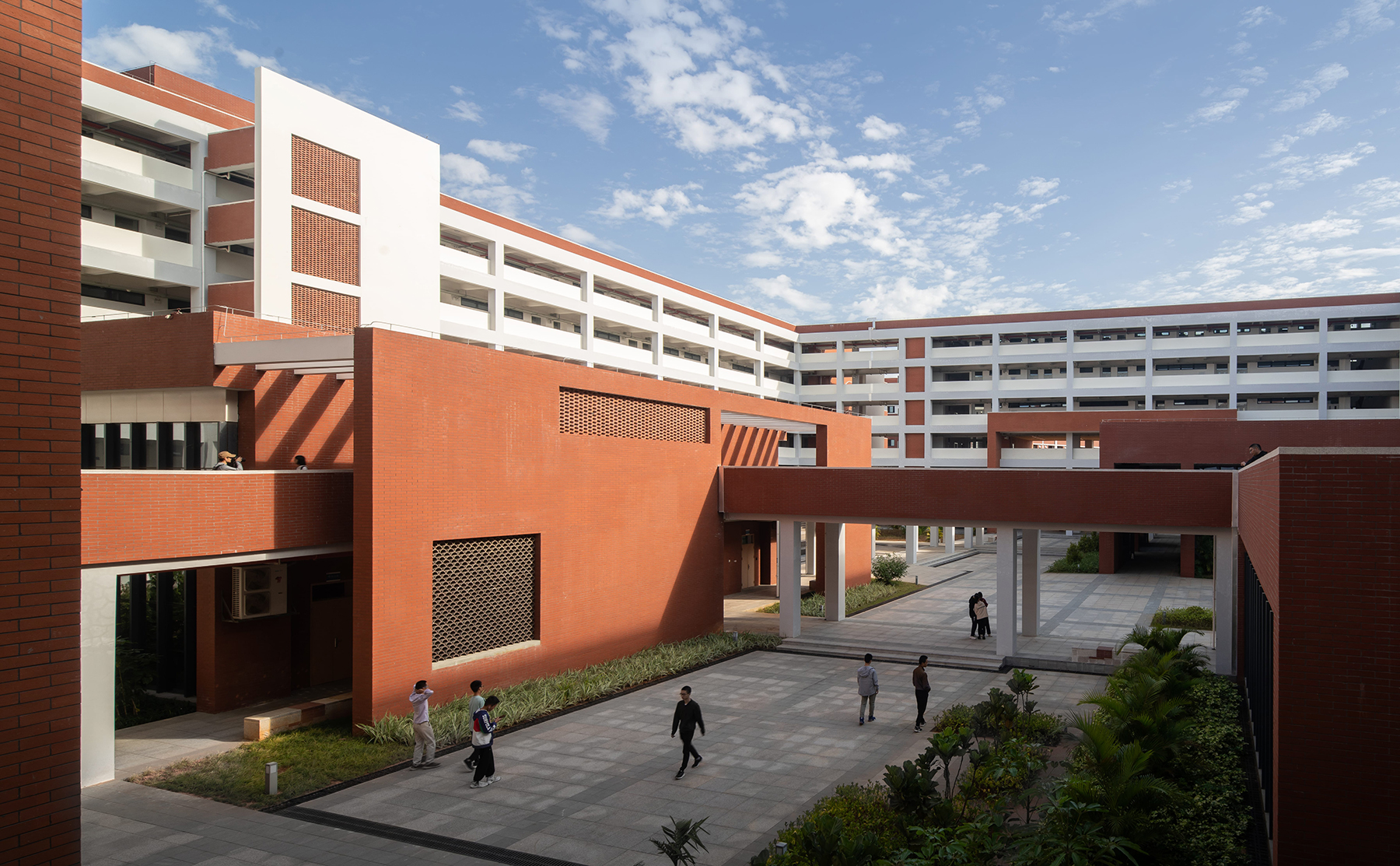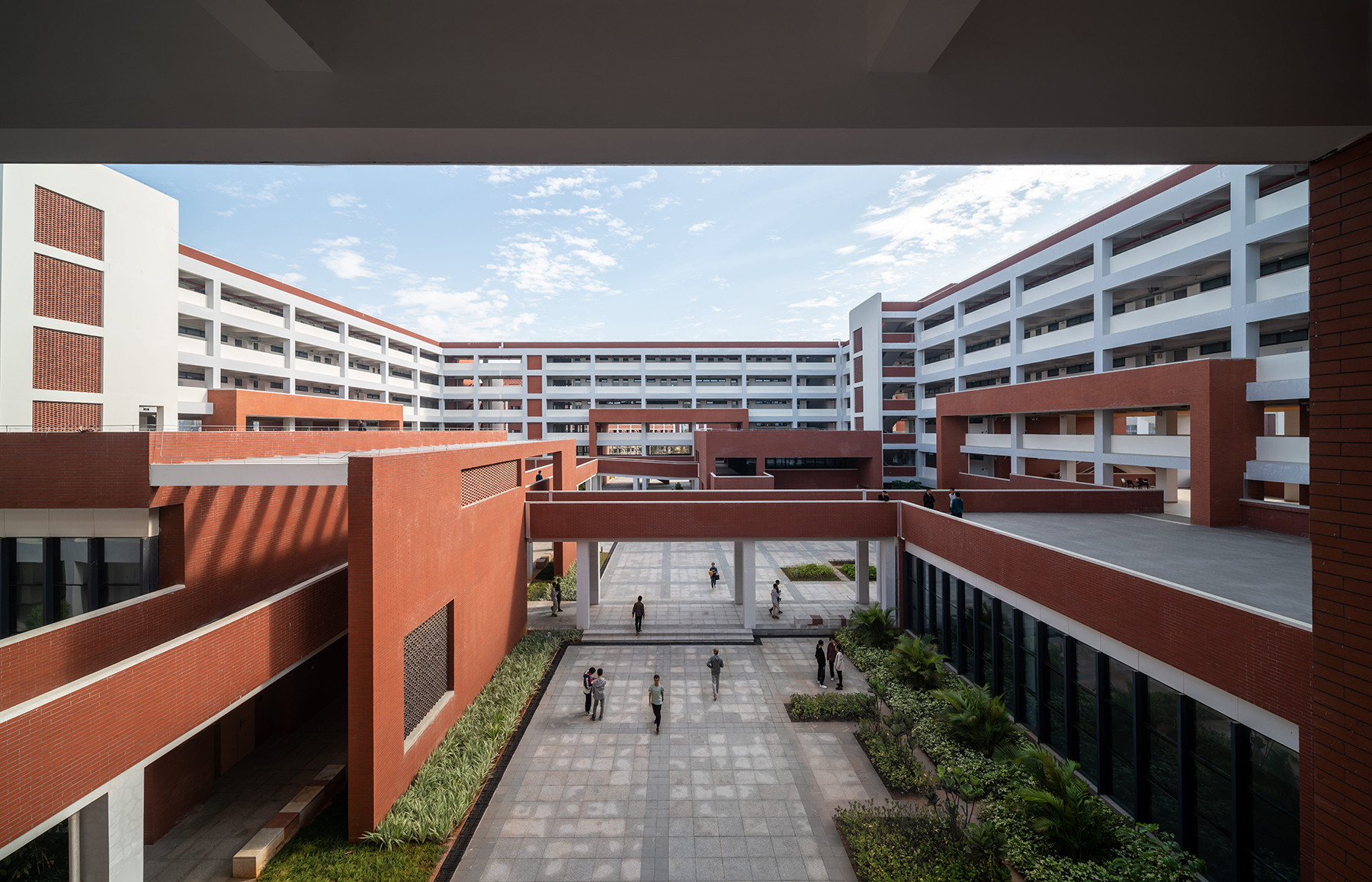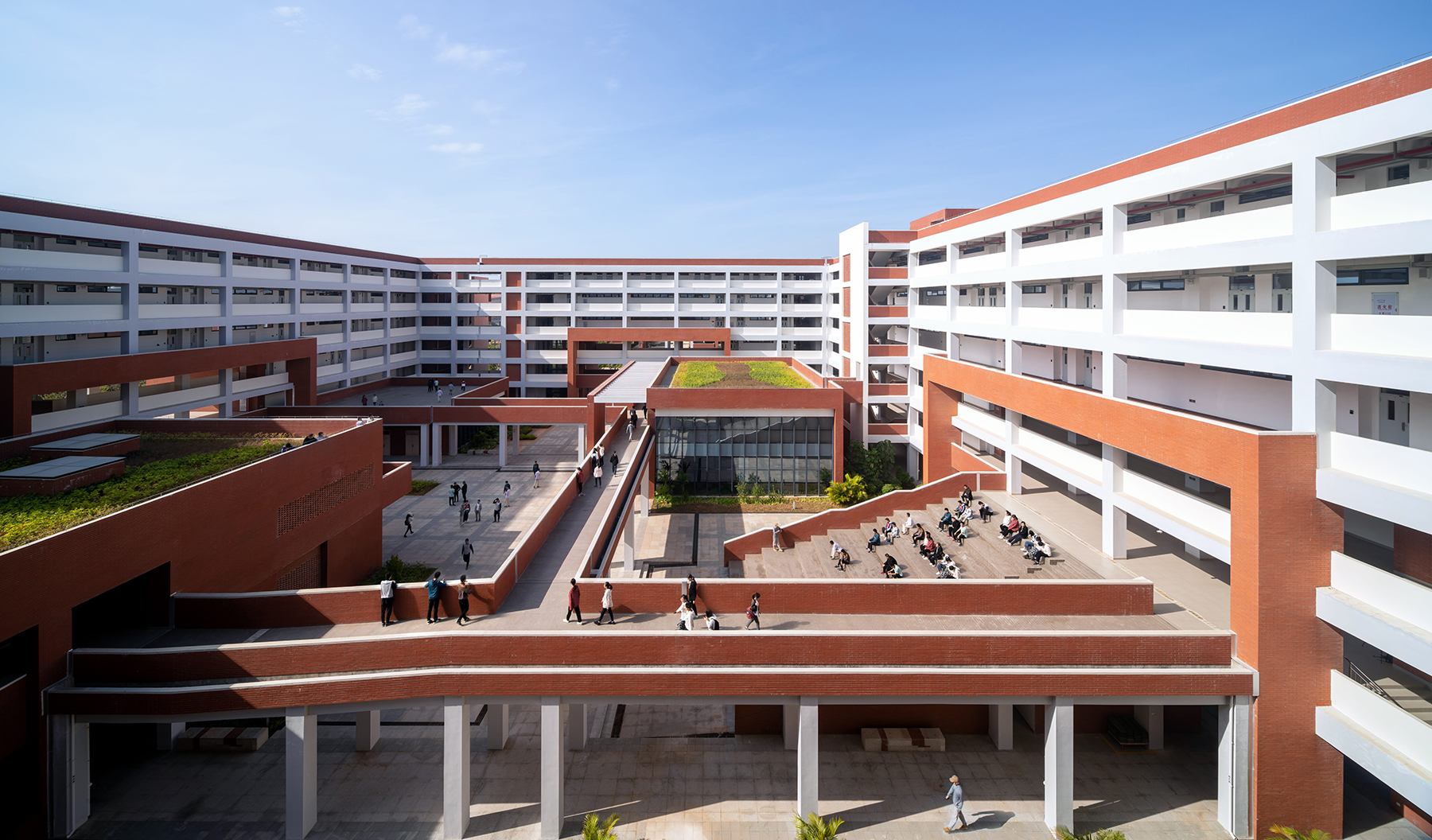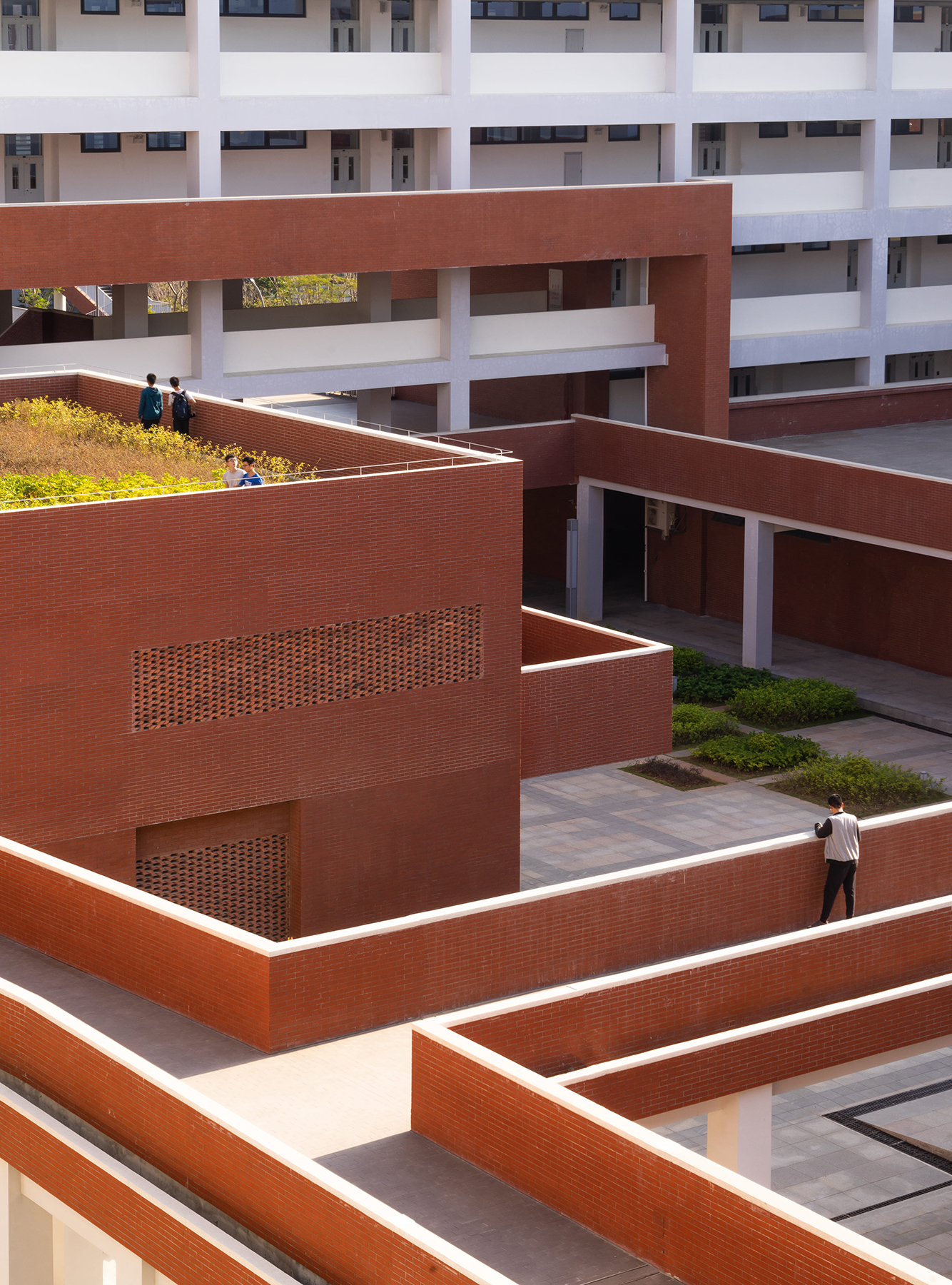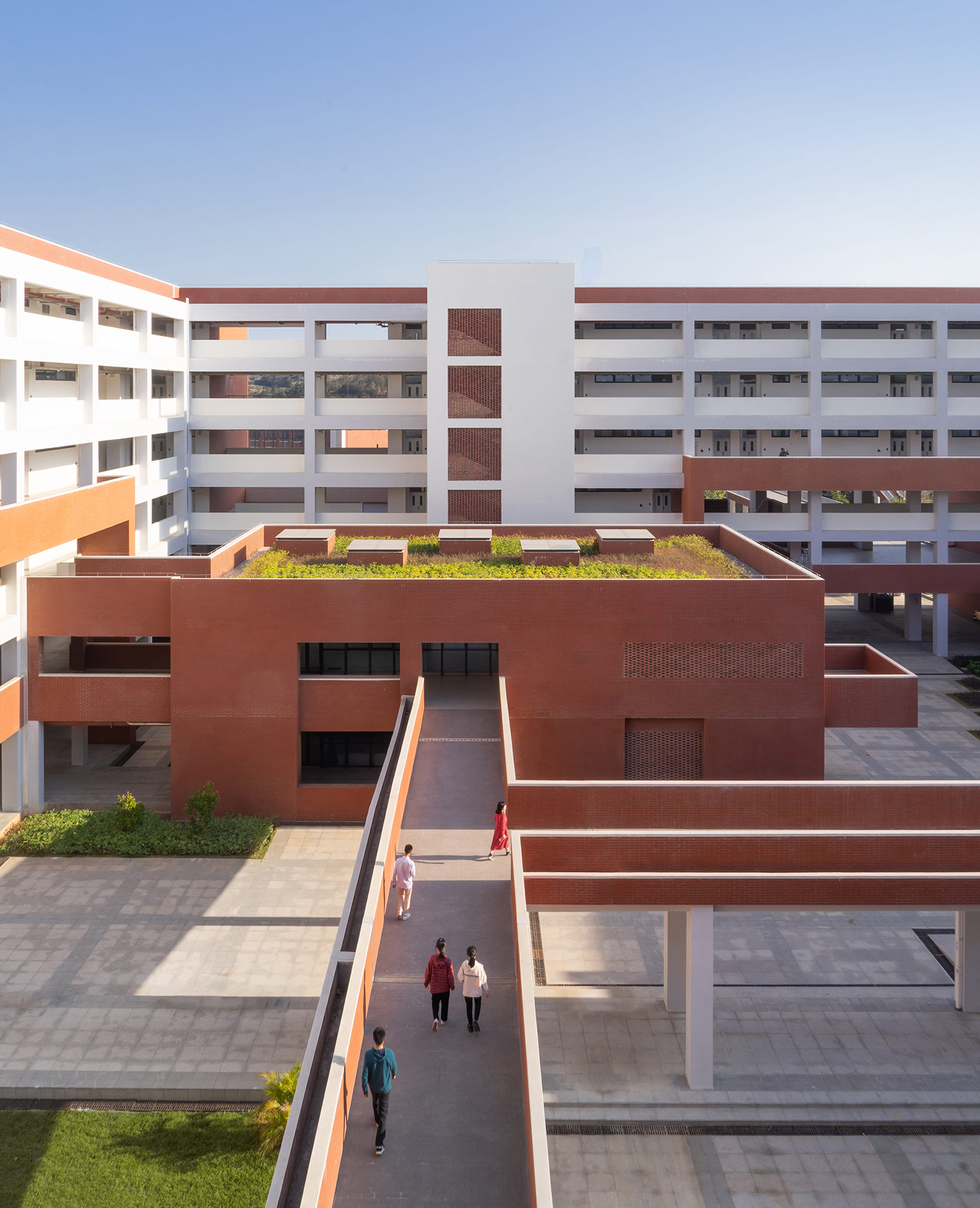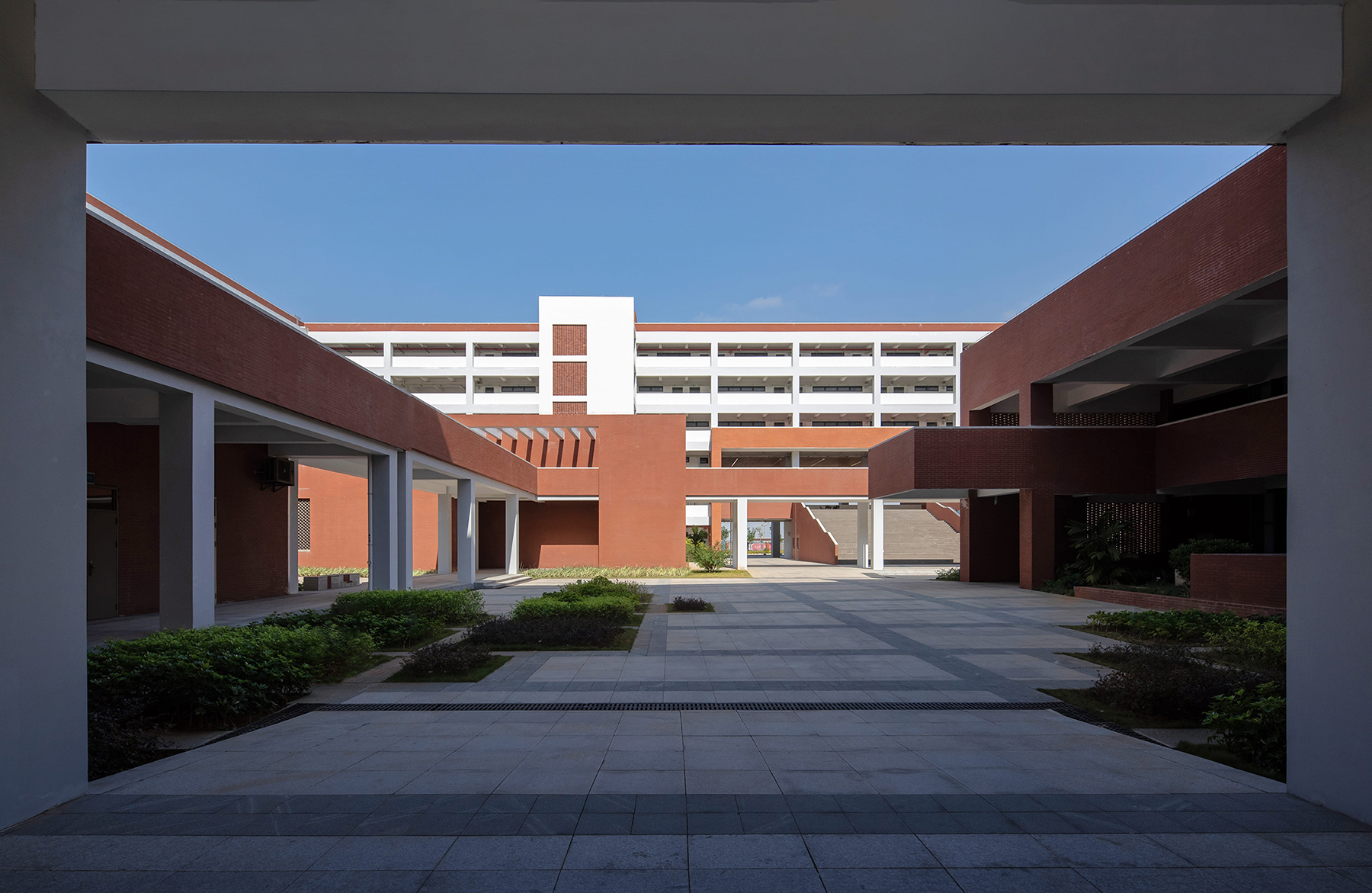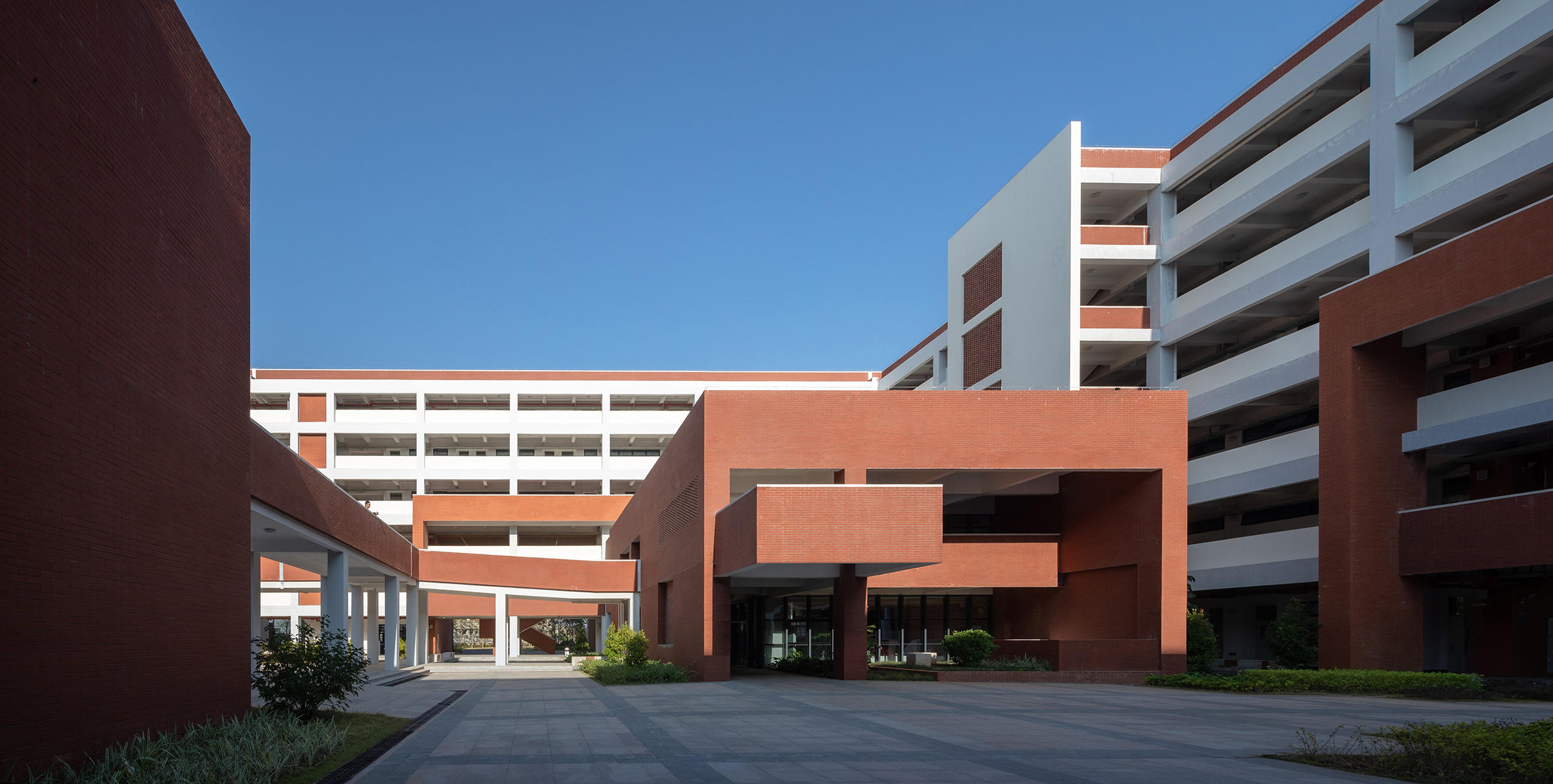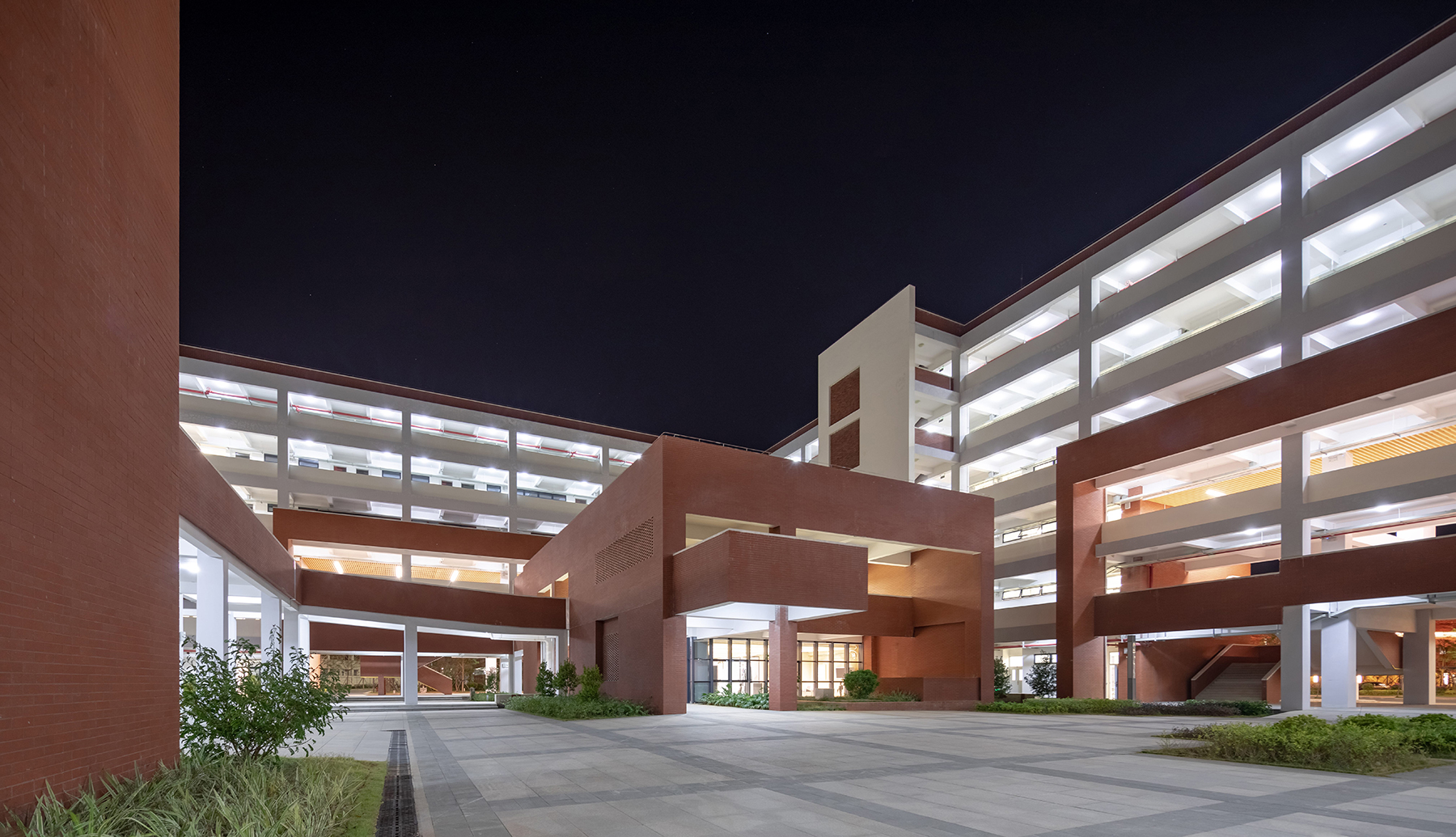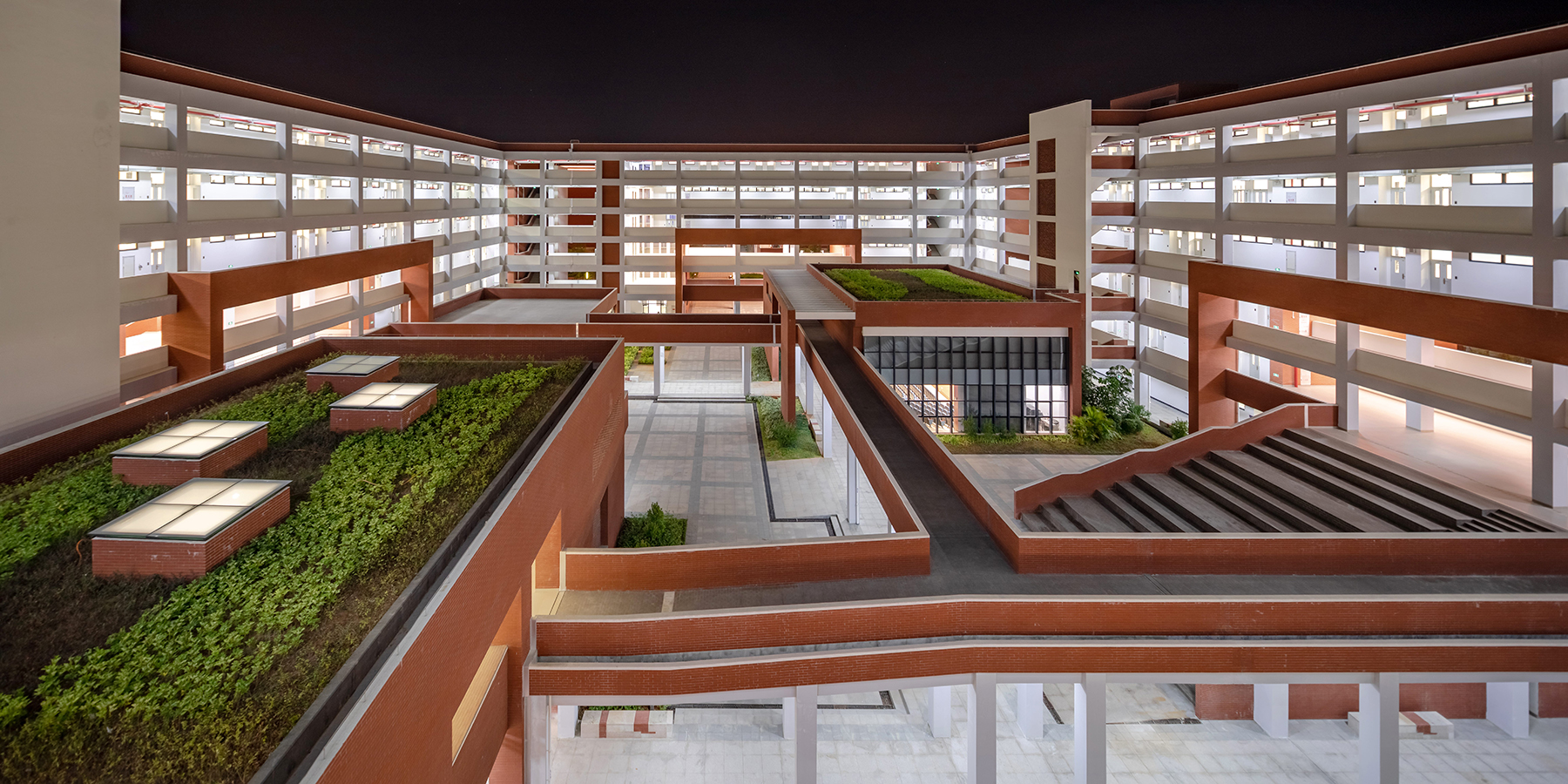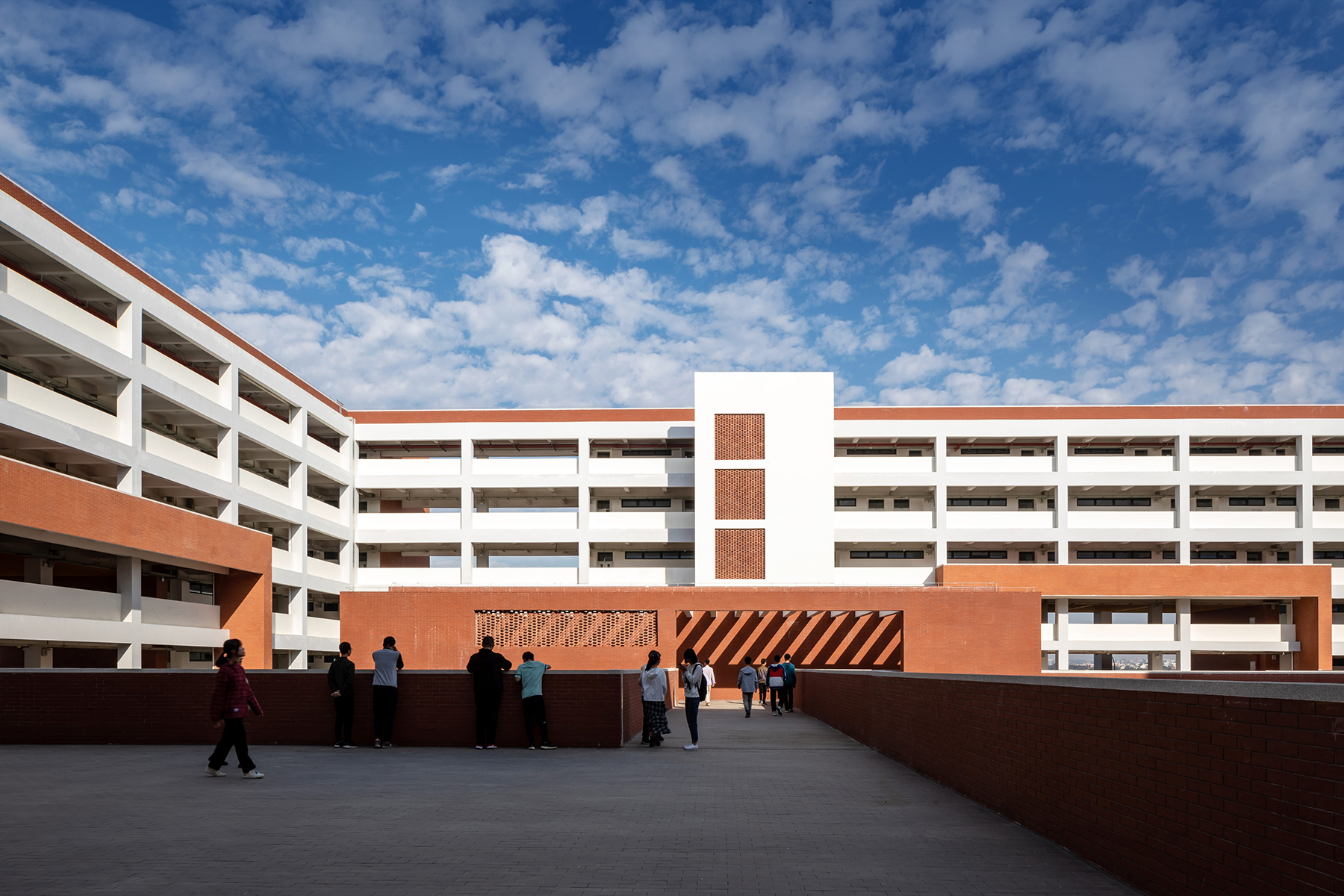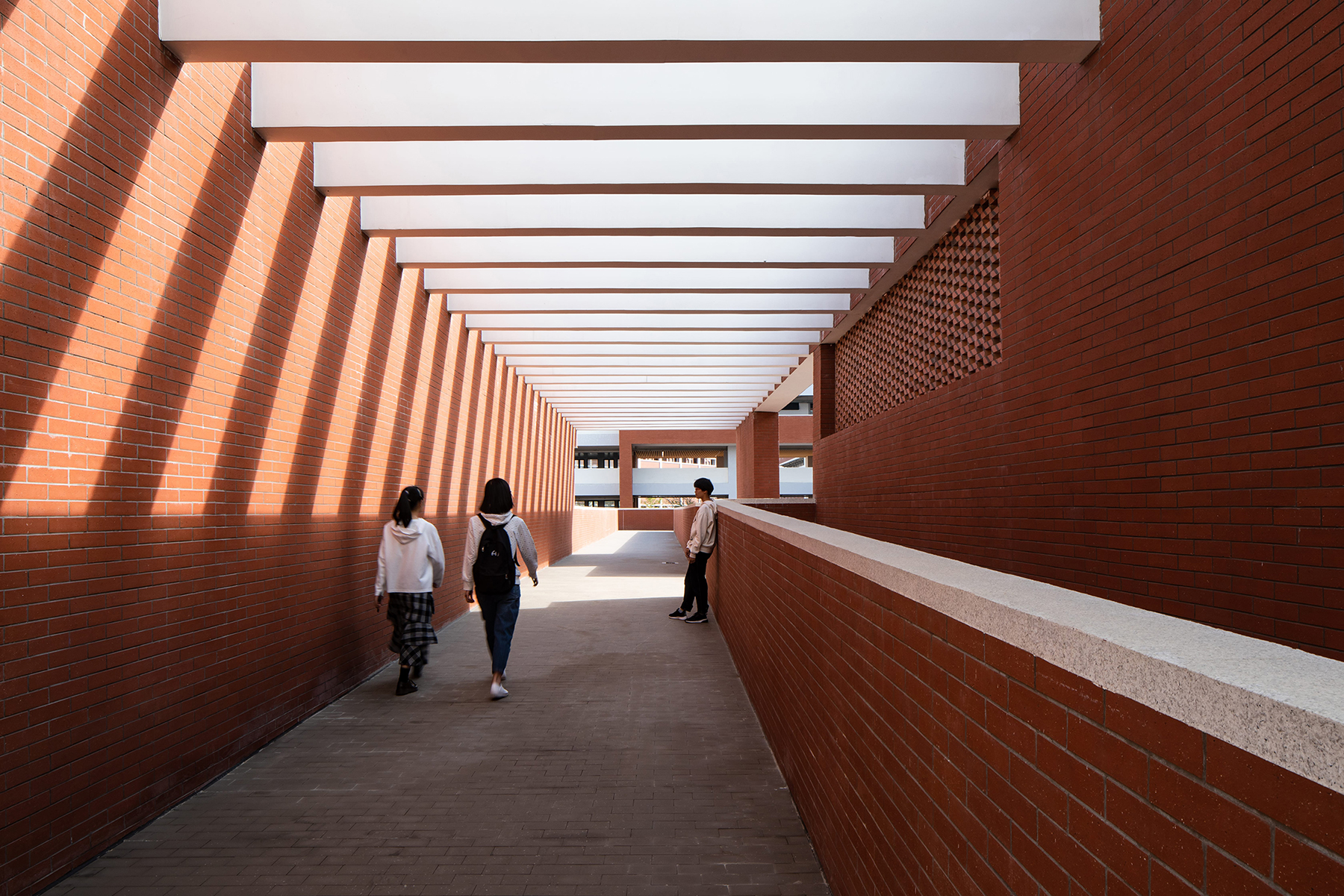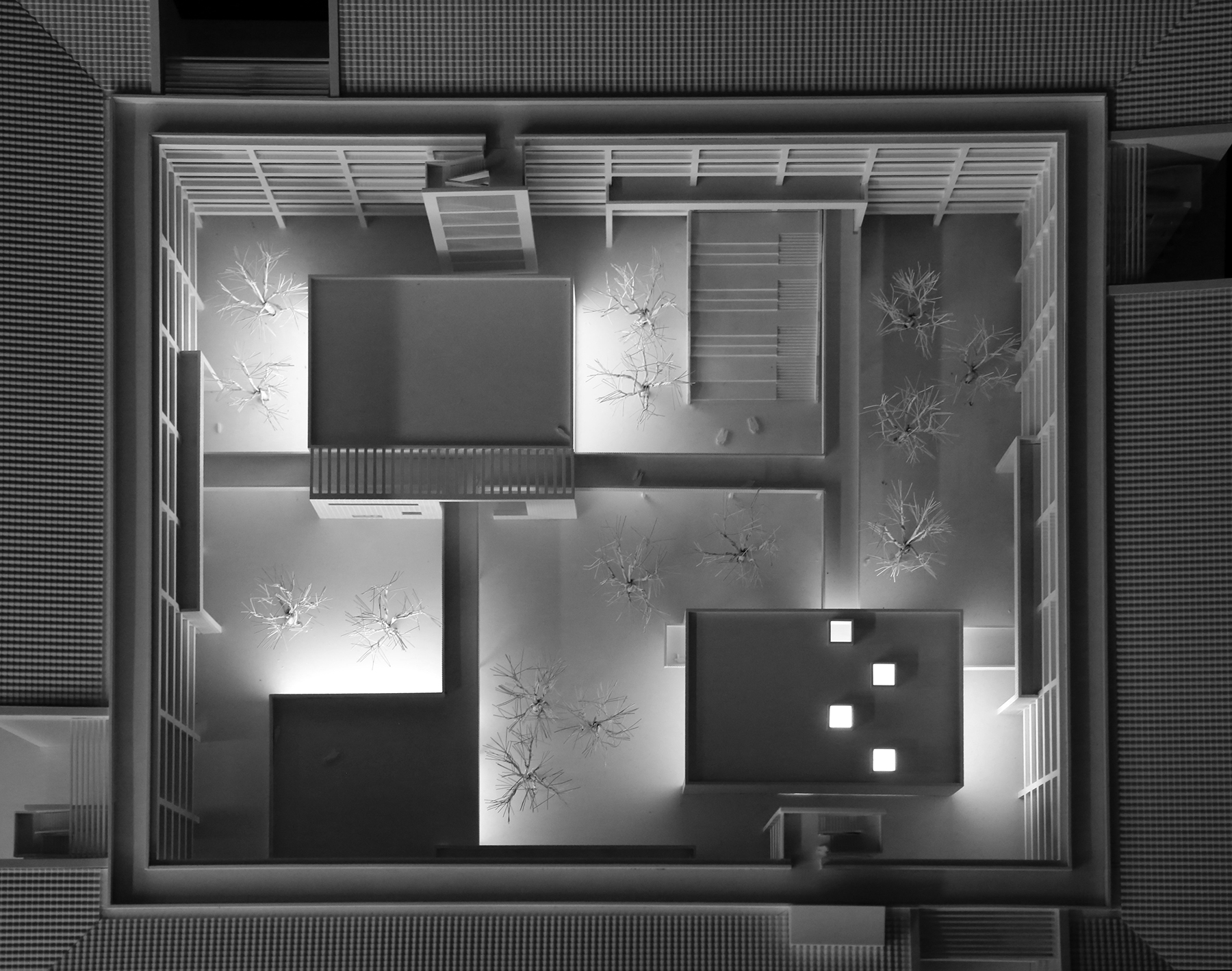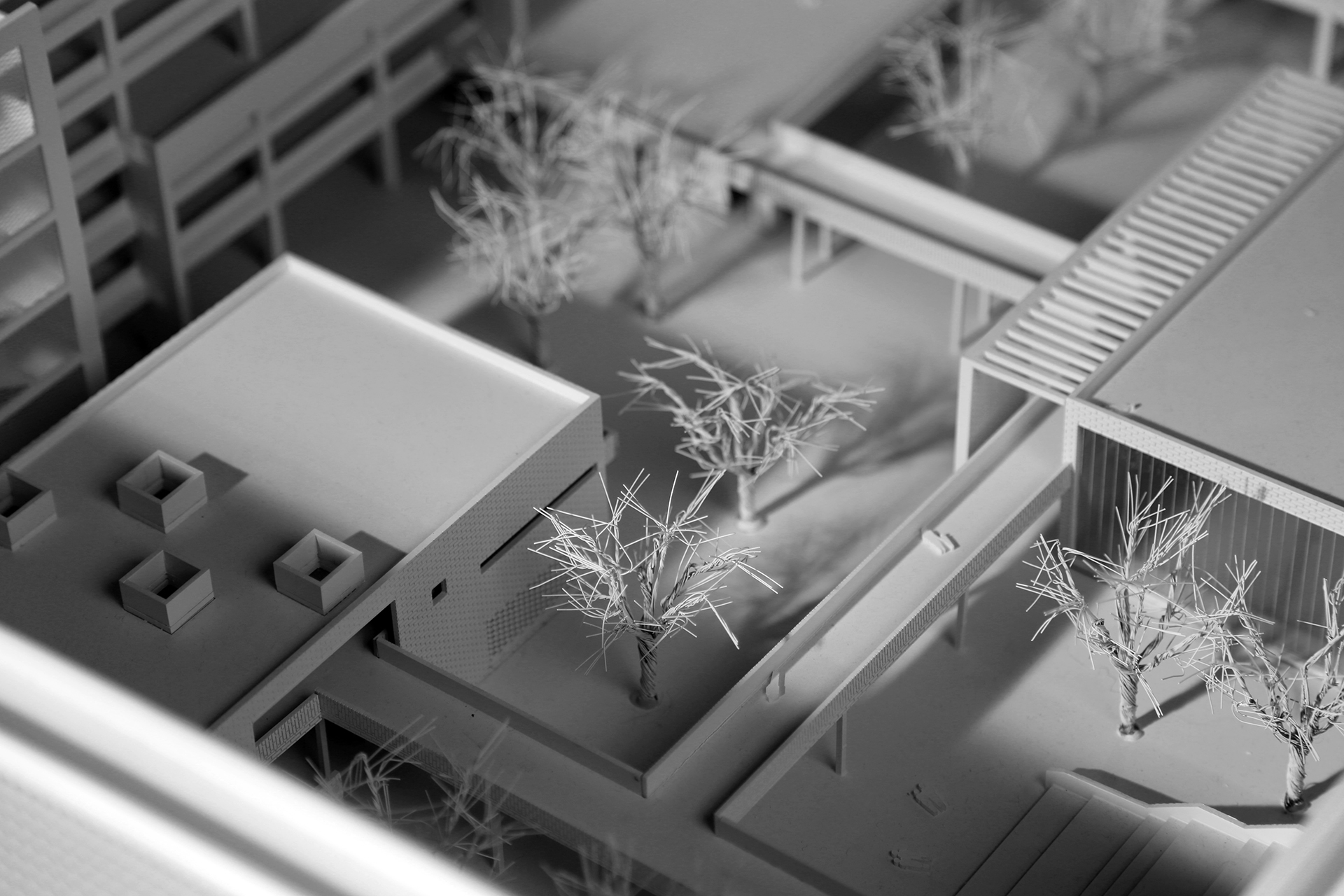A Micro Village with Connected Yards
Red Brick Learning Center is the biggest twin buildings on the Jinjiang Campus of Fuzhou University. Instead of following the original task book to set up 12 separate buildings, we integrated various modules into two micro villages with united courtyards, linking all departments to share all teaching resources. The integrated teaching blocks not only save land for the campus, but also connect different schools together to encourage students' interdisciplinary exchange and research.
The Transparency of Chinese Screens
For organizing the space system of the entire building, we used the "double screens" artifice of ancient Chinese painting to increase the transparency of public spaces. Based on a flat square grid, various traditional Chinese garden elements were introduced into multiple scale courtyards: red hollow brick walls, a tortuous bridge, a moon gate, a floating pavilion, a lifted platform, a scenic window, etc. The overlapping interfaces create the "transparency" of architecture with a composition of various materials. In the daytime, the interlocked space creates a variety of light and shadow effects. At night, the inner courtyard emits light in all directions to create a magical stage effect. At the same time, this dedicated arrangement has given students more possibilities outside the classrooms.
Unnamed Spaces for The Future
At present, each box in the courtyard has its specific function, such as a skylight studio, a black box theater, a mock court and an outdoor theater, which can be reserved by any department. In the future, the entire yard will be more like a set of devices that might be redefined for different scenes and events. Here, the function of the building does not have to follow the form; the various possible forms of spatial combination will inspire people to create novel functions. What's more exciting is that those nameless spaces are becoming the most popular places, where students love to hang out on weekends.
